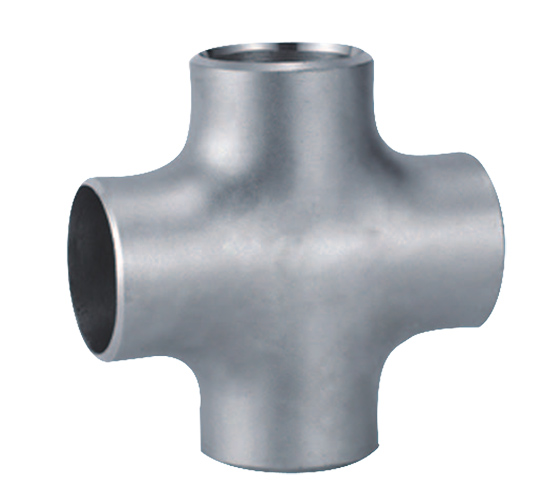-
Cangzhou Yulong Steel Co., Ltd.
-
Phone:
+86 13303177267 -
Email:
admin@ylsteelfittings.com
- English
- Arabic
- Italian
- Spanish
- Portuguese
- German
- kazakh
- Persian
- Greek
- French
- Russian
- Polish
- Thai
- Indonesian
- Vietnamese
- Zulu
- Korean
- Uzbek
- Hindi
- Serbian
- Malay
- Ukrainian
- Gujarati
- Haitian Creole
- hausa
- hawaiian
- Hebrew
- Miao
- Hungarian
- Icelandic
- igbo
- irish
- Japanese
- Javanese
- Kannada
- Khmer
- Rwandese
- Afrikaans
- Albanian
- Amharic
- Armenian
- Azerbaijani
- Basque
- Belarusian
- Bengali
- Bosnian
- Bulgarian
- Catalan
- Cebuano
- China
- China (Taiwan)
- Corsican
- Croatian
- Czech
- Danish
- Esperanto
- Estonian
- Finnish
- Frisian
- Galician
- Georgian
- Kurdish
- Kyrgyz
- Lao
- Latin
- Latvian
- Lithuanian
- Luxembourgish
- Macedonian
- Malgashi
- Malayalam
- Maltese
- Maori
- Marathi
- Mongolian
- Myanmar
- Nepali
- Norwegian
- Norwegian
- Occitan
- Pashto
- Dutch
- Punjabi
- Romanian
- Samoan
- Scottish Gaelic
- Sesotho
- Shona
- Sindhi
- Sinhala
- Slovak
- Slovenian
- Somali
- Sundanese
- Swahili
- Swedish
- Tagalog
- Tajik
- Tamil
- Tatar
- Telugu
- Turkish
- Turkmen
- Urdu
- Uighur
- Welsh
- Bantu
- Yiddish
- Yoruba

Dec . 24, 2024 03:57 Back to list
Understanding Weld Reducers for Efficient Pipe Connections and Seamless Transitions
Understanding Weld Reducers Key Components in Piping Systems
Weld reducers are essential fittings utilized in various industries, particularly in piping and plumbing applications. These components play a pivotal role in connecting pipes of different diameters, facilitating a seamless transition from a larger pipe to a smaller one— or vice versa. Understanding weld reducers, their types, applications, and fabrication processes can significantly enhance efficiency in piping systems.
What is a Weld Reducer?
A weld reducer, also known as a pipe reducer, is a type of fitting that reduces the diameter of a pipe. It allows for the smooth transition of fluid flow from a larger pipe to a smaller one, which is crucial in maintaining system pressure and flow rate. Weld reducers are commonly made from materials such as stainless steel, carbon steel, and alloy materials, which exhibit excellent strength and resistance to corrosion.
Types of Weld Reducers
Weld reducers come in various shapes and configurations, with the most common types being concentric and eccentric reducers
1. Concentric Reducers These reducers maintain a symmetrical transition and are typically used in vertical piping systems. They allow for the flow of fluids to be directed evenly, minimizing turbulence.
2. Eccentric Reducers Often used in horizontal piping systems, eccentric reducers are designed to maintain a consistent top or bottom elevation. This design helps to avoid trapping air or vapor in the system, which can significantly impact performance.
Applications of Weld Reducers
Weld reducers are widely utilized across various industries, including oil and gas, chemical processing, water treatment, and HVAC systems. Their primary applications include
- Fluid Transportation In industries that require the transport of liquids and gases, weld reducers are crucial for optimizing flow rates and minimizing pressure drops. - System Maintenance When modifying existing piping systems, weld reducers provide the necessary flexibility to accommodate changes in pipe size without compromising the integrity of the system. - Connecting Different Systems In scenarios where different piping systems need to be interconnected, weld reducers facilitate compatibility, ensuring a smooth transition from one pipe size to another.
weld reducer

Fabrication Process
The manufacturing of weld reducers typically involves several stages, starting with material selection. Depending on the intended application, manufacturers select materials that provide the necessary strength, corrosion resistance, and temperature tolerance.
1. Cutting The chosen material is cut into the desired shape, often using methods such as plasma cutting or manual cutting techniques.
2. Forming The cut pieces are then formed using processes like bending, forging, or pressing to achieve the desired geometry.
3. Welding After forming, the components are welded together. This is a critical step, as the quality of the weld directly influences the performance and durability of the reducer. Techniques such as TIG or MIG welding may be employed, depending on the material and thickness.
4. Finishing Finally, the weld reducer undergoes finishing processes, which may include grinding, polishing, and applying protective coatings to enhance durability and resistance to environmental factors.
Benefits of Using Weld Reducers
The integration of weld reducers in piping systems offers several benefits
- Enhanced Flow Control By providing a gradual transition between pipe sizes, weld reducers help to control fluid dynamics, reducing the chances of turbulence and pressure drops. - Structural Integrity Welded joints typically exhibit higher strength compared to threaded or flanged connections, ensuring long-lasting performance under high pressure and temperature conditions. - Cost-Effectiveness By minimizing the need for additional fittings and connections, weld reducers can lower overall installation and maintenance costs in piping systems.
Conclusion
Weld reducers serve as vital components in modern piping systems, enabling efficient fluid flow management and connectivity across various industrial applications. With a nuanced understanding of their types, applications, and fabrication processes, engineers and technicians can better design and maintain systems that meet the demands of today's industries. As technology and materials continue to evolve, weld reducers will undoubtedly play an essential role in optimizing piping infrastructure for the future.
Latest news
-
ANSI 150P SS304 SO FLANGE
NewsFeb.14,2025
-
ASTM A333GR6 STEEL PIPE
NewsJan.20,2025
-
ANSI B16.5 WELDING NECK FLANGE
NewsJan.15,2026
-
ANSI B16.5 SLIP-ON FLANGE
NewsApr.19,2024
-
SABS 1123 FLANGE
NewsJan.15,2025
-
DIN86044 PLATE FLANGE
NewsApr.19,2024
-
DIN2527 BLIND FLANGE
NewsApr.12,2024
-
JIS B2311 Butt-Welding Fittings LR/SR 45°/90° /180°Seamless/Weld
NewsApr.23,2024











